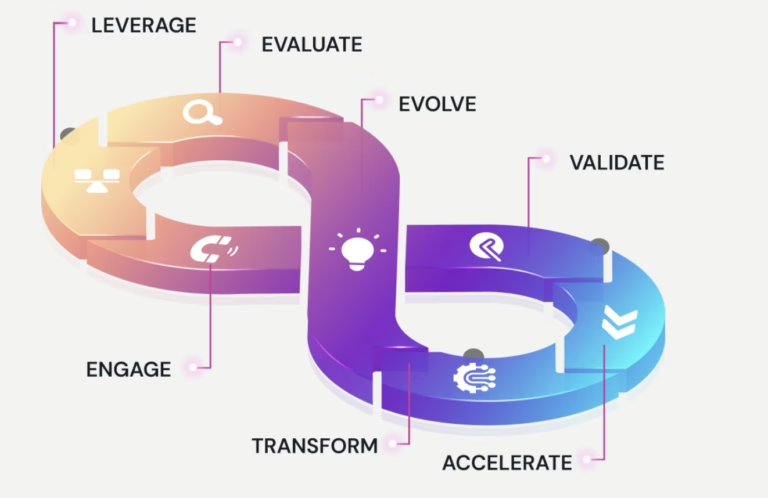Understanding the Corporate Sustainability Reporting Directive (CSRD) can seem overwhelming, but it also presents an incredible chance for organizations to align their strategies with sustainability goals while meeting new rules. With over 50,000 companies now required to share their sustainability practices, the CSRD represents a major shift in corporate transparency and governance.
One key step to achieving compliance is conducting a Gap Analysis, a necessary process that evaluates your organization’s current reporting setup against CSRD requirements. After completing the Double Materiality Assessment (DMA), which identifies crucial sustainability topics, the Gap Analysis serves as the next essential step. It highlights gaps between your existing data systems and the directive’s standards, providing a clear plan for improvement.
Let’s understand the Gap Analysis process, explore how it connects to double materiality, and share simple steps to help your organization prepare for successful CSRD reporting. Whether you’re just starting or improving your sustainability efforts, this guide will help you close the gaps and turn compliance into a smart strategy.
Sustainability Reporting – The New Corporate Language
Sustainability reporting has become an essential practice for businesses aiming to show their commitment to Environmental, Social, and Governance (ESG) responsibilities. Far from being just a compliance task or a way to boost public image, it is a process that helps organizations measure, understand, and share their impact on society and the environment alongside their financial performance.
In the EU, the Corporate Sustainability Reporting Directive (CSRD) sets a new standard, requiring companies to follow strict guidelines. Many businesses also choose to follow globally recognized standards like the Global Reporting Initiative (GRI) or the Sustainability Accounting Standards Board (SASB) to make their reports more reliable and comparable.
However, sustainability reporting comes with its challenges.
- Internal challenges arise within companies, such as managing large amounts of data, dealing with unclear measurements, and fully including sustainability in everyday business.
- External challenges come from outside pressures, like balancing different reporting standards, avoiding misleading claims (greenwashing), and managing the high costs of compliance.
- Additionally, CSRD-specific challenges like reporting all indirect emissions (Scope 3) and using advanced digital tools—make the process even more demanding.
By understanding and tackling these challenges, companies can improve their transparency, build trust, and take meaningful steps toward accountability in sustainability.
CSRD Compliance & Why Gap Analysis Matters
The Corporate Sustainability Reporting Directive (CSRD) marks a big change in corporate transparency, significantly expanding the scope of the Non-Financial Reporting Directive (NFRD). It challenges businesses to provide more detailed and reliable insights into their environmental and social impacts. By requiring the disclosure of essential sustainability matters, the CSRD ensures that organizations take responsibility seriously.
Amid these new requirements, the Gap Analysis becomes a key step in the reporting process. This strategic review finds gaps between a company’s current ESG data collection and reporting practices and the CSRD’s stricter standards. Think of it as a guiding compass that directs organizations from where they are now to where they need to be to meet the rules.
Gap analysis is far from just a box-ticking exercise—it’s the foundation for a smooth and effective reporting journey. By finding gaps early, companies can make data collection easier, focus resources where needed, and avoid delays. Skipping this important step risks making the reporting process harder and longer, leading to inefficiencies and missed deadlines.
Starting with gap analysis not only simplifies compliance but also sets the stage for a clearer, more responsible, and sustainable way of doing business in line with CSRD’s goals.
Why Your Business Needs a Gap Analysis?
Conducting a gap analysis is an essential step in CSRD reporting. It helps you understand your organization’s current sustainability practices and identify areas for improvement. By analyzing your existing reporting methods, you can determine what’s working and what needs to change. This process ensures your data is accurate, complete, and meets CSRD requirements.
You’ll also bring together different teams within your organization to collaborate effectively. Sustainability isn’t a one-person job—it’s a group effort. A gap analysis gets everyone on the same page and helps you create a clear plan of action to align your practices with CSRD standards.
Of course, you may face challenges, like figuring out the full scope of CSRD requirements, gathering data across departments, and adapting to changing regulations. But these challenges also create opportunities. You can streamline processes, use resources more effectively, and prepare your organization for future growth.
A gap analysis is more than just ticking a box for compliance. It’s your chance to create a plan that not only meets current standards but also positions your organization for long-term success. With the right approach, you’ll turn gaps into opportunities for improvement and progress.
Turning Challenges into Opportunities – Your CSRD Reporting Roadmap
Embarking on a Gap Analysis is a crucial step in aligning with the CSRD, serving as much more than a procedural necessity. It is a strategic initiative that brings sustainability into the framework of corporate decision-making.
Do you need expertise for your CSRD reporting? Teaming up with sustainability specialists like 47Billion can offer invaluable insights and assistance, ensuring that organizations not only meet regulatory demands but also harness their sustainability reporting as a strategic resource. Explore 47Billion’s advanced CSRD solution, which simplifies data collection and reporting, fostering long-term efficacy. Additionally, our Sustainability Advisory services are here to jump-start your CSRD reporting journey. Book a call for further details.







